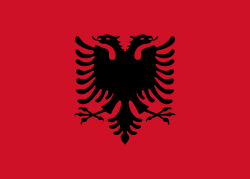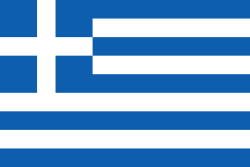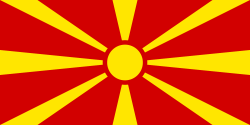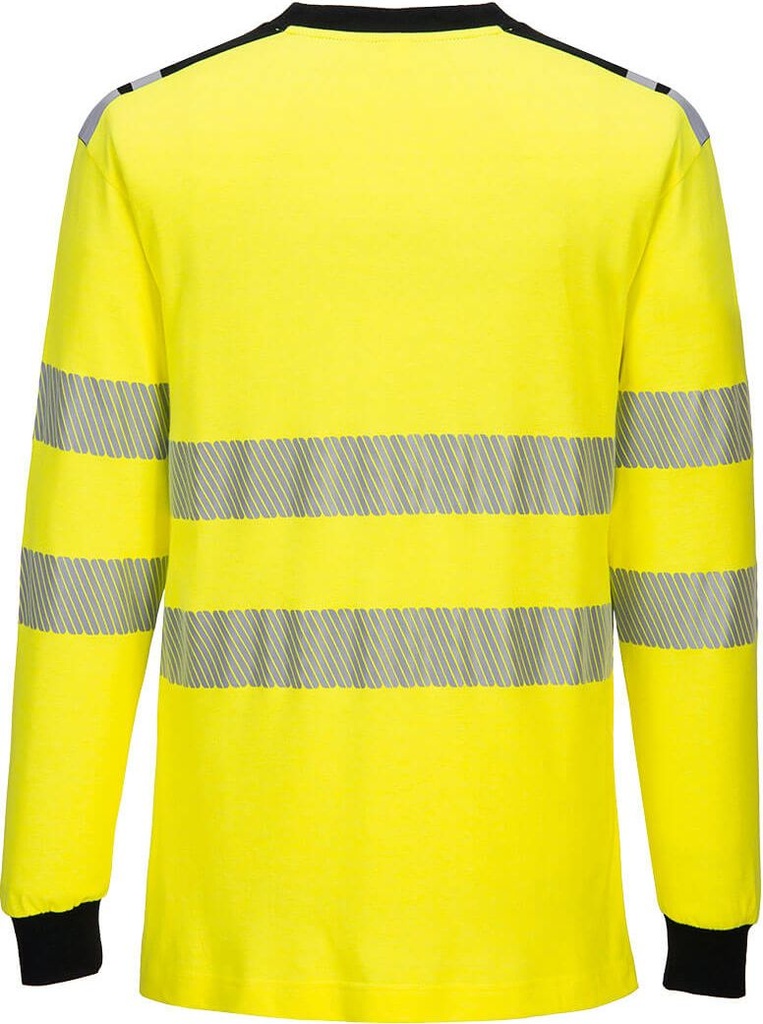FR701 PW3 Flame Resistant Hi-Vis T-Shirt, Inherent FR
Constructed using lightweight modacrylic fabric, this t-shirt offers excellent freedom of movement due to its segmented tape design. Lightweight and stylish, this long-sleeved t-shirt is the perfect choice to provide the wearer with advanced visibility and protection in hazardous situations.
Features:
- Inherent flame resistant qualities will not diminish with washing
- Protection against radiant, convective and contact heat
- Heat applied segmented reflective tape for added visibility
- Designed with a comfort fit
- Ribbed cuffs for added comfort
- Crew neck
- New style
- CE-CAT III
- CE certified
- 40+ UPF rated fabric to block 98% of UV rays
Fabric Information:
Shell Fabric: Modaflame Knit: 60% Modacrylic, 39% Cotton, 1% Carbon Fiber, 210g
Standards: EN ISO 11612 (A1, B1, C1, F1)
EN 1149-5
IEC 61482-2 IEC 61482-1-1 (Elim 4.4CAL/cm²)
IEC 61482-2 IEC 61482-1-2 APC 1
EN ISO 20471 Class 3
ASTM F1959/F1959M-12 (EBT = 4.3 CAL/CM² (HAF = 66%))

PORTWEST PW3
HIGH PERFORMANCE WORKWEAR DESIGNED TO WORK HARD IN DEMANDING ENVIRONMENTS. Blending sports and lifestyle trends the PW3™ collection is designed to deliver maximum performance. Now the largest workwear collection on the market, PW3 has an offer to keep wearers protected, dry and comfortable whatever their working environment.
EN ISO 20471 Hi-Vis Class 3
EN ISO 20471 is divided into three classes, the requirement for the area consisting of reflectors and fluorescent materials – that determines which class you need to choose. Minimum areas of visible material in m². Class 3: Reflective Tape = 0.20m², Fluorescent material = 0.80m². Class 2: Reflective Tape = 0.13m², Fluorescent material = 0.50m². Class 1: Reflective Tape = 0.10m², Fluorescent material = 0.14m². The highest class is class 3. There are two ways to attain class 3. Either choose an EN ISO 20471 product that is rated class 3 on its own (e.g. a jacket) or choose two products that together are class 3 certified.Details
EN ISO 11612 Heat & Flame
Letter A (EN 15025) This test consists of applying a flame to a fabric sample for 10 seconds. To pass the test, the after flame & smoulder times and formation of holes must be within the tolerances within the standard. The application of a flame can take place in two ways: Code Letter A1 Surface Ignition, ISO15025 A Procedure A (leads to Class A1), the flame is applied horizontally to the face of the fabric No specimen shall permit any part of the lowest boundary of any flame to reach the upper or either vertical edges No specimen shall give hole formation of 5mm or greater in any direction, except for an inter-lining that is used for specific protection other than heat and flame protection. No specimen shall give flaming or molten debris The mean value of after flame time shall be ≤ 2s The mean value of afterglow time shall be ≤ 2s Code Letter A1 Edge Ignition, ISO15025 B Procedure B (leads to Class A2), the flame is applied to the bottom edge of the fabric sample. No specimen shall permit any part of the lowest boundary of any flame to reach the upper or either vertical edges No specimen shall give flaming or molten debris The mean value of after flame time shall be ≤ 2s The mean value of afterglow time shall be ≤ 2s Letter B (ISO 9151) Convective Heat: determination of the heat transmission when exposed to flames. The sample is held above the flame and the rise in temperature on the topside of the sample is measured with a calorimeter. The length of time the sample can remain exposed before its temperature rises by 24 °C is determined. B1: 4 < 10 seconds, B2: 10 < 20 seconds, B3: 21 seconds and longer Letter C (ISO 6942) Exposure to Radiant Heat. In this test, a fabric sample is exposed to radiant heat (infrared rays). The temperature on the reverse (unexposed) side of the sample is registered using a calorimeter. Subsequently, the length of time the sample the sample can remain exposed before its temperature rises by 24°C is measured. The test procedure is the same as ISO 11611, but the classification is different: C1: 7 < 20 seconds, C2: 20 < 50 seconds, C3: 50 < 95 seconds, C4: 95 seconds and longer Letter D and E (ISO 9185) D = Aluminium E = Molten Iron Determining the level of protection against spatters of molten metal. A membrane (with similar properties to human skin) is attached to the reverse of the fabric sample sequentially rising quantities of molten metal (Aluminium or Iron as applicable) are splashed on the sample. The quantity of molten metal which deforms the membrane is determined. The classification for molten aluminium is: D1: 100 < 200 grams, D2: 200 <350 grams, D3: 350 grams and more The classification for molten iron is: E1: 60 < 120 grams, E2: 120 < 200 grams, E3: 200 grams and more Letter F (ISO 12127) This is a new test to establish a value for contact heat. The classification in this respect: F1: 5 < 10 seconds, F2: 10 < 15 seconds, F3: 15 seconds and longerDetails
EN 13034 Liquid Chemicals
Standard for protection of a potential exposure to a light spray, liquid aerosols or low pressure, low volume splashes when complete liquid permeation barrier (at a molecular level) is not required. The following chemical groups/chemicals can be tested: H2SO4 30% (Sulphuric acid), NaOH 10% (Sodium hydroxide also called lye and caustic soda), O-xylene, Butanol. The result is given in scale 1-3 where the maximum value is 3. To pass the test and be able to use the EN 13034 symbol in the CE-marking, at least one chemical shall obtain level 3 for liquid repellency and at least one chemical shall obtain level 2 for resistance to penetration.Details
Inherent FR Garments
Inherent fabric guarantees lifelong protection for the wearer. The FR properties lie in the molecular structure of the fibres and cannot be washed or worn out. PROS: excellent heat and ARC protection, excellent colour fastness even after numerous washings hence good cost in use performance, typically lighter weight solutions with excellent comfort levels, typically used in less dirty environments where the corporate look is also important. CONS: limited protection against molten metal splash, typically a more expensive fabric than FR treated. The most common FR fibers used in protective clothing are modacrylics and aramidsDetails
Share this product:
| Color | YNR Yellow/Navy or YBR Yellow/Black |
| Garment Size | S - Small or M - Medium or L - Large or XL - XLarge or XXL - XXLarge or XXXL - 3XLARGE |
Once the user has seen at least one product this snippet will be visible.











